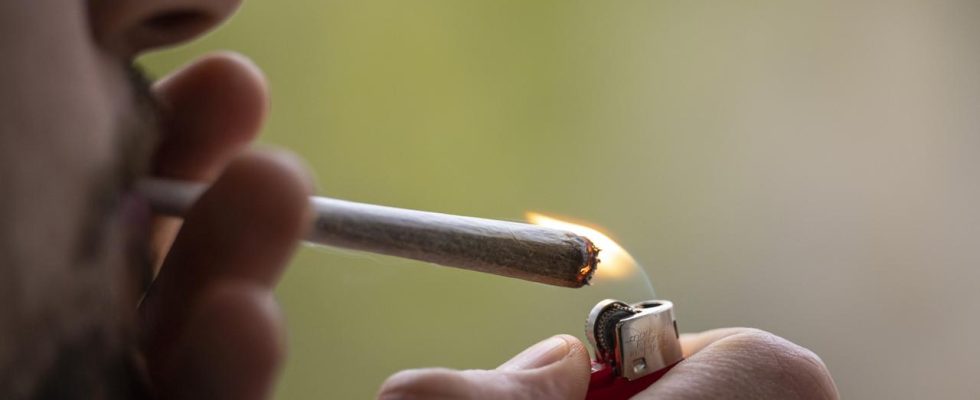faq
What active ingredients does cannabis contain and how harmful is smoking weed? The federal government’s initiative for legalization has once again raised questions. An overview.
What is cannabis?
Cannabis is the scientific name for the hemp plant. It is an ancient cultivated plant and was cultivated in Persia and China as early as 12,000 years ago. Hemp seeds served as food, fibers of the plant are used to make clothing and paper, but also as an intoxicant.
How is cannabis consumed?
Marijuana or “weed” are dried parts of plants – primarily the flowers and leaves of the female hemp plant. Hashish or “dope” is resin from the female hemp plant pressed into sheets. Hash oil is an extract from the resin of the female flowers.
Cannabis is usually mixed with tobacco as a “joint” or smoked pure as a so-called “blunt”. The ingredients are also released in water pipes (“bongs”) or vaporizers. Cannabis is also dissolved in fat and baked into cakes or biscuits, or drunk as a tea.
What active ingredients does cannabis contain?
In addition to hundreds of chemical compounds, the most important ingredients are the so-called cannabinoids tetrahydrocannabinol (THC) and cannabidiol (CBD).
How does cannabis work?
THC and CBD are attributed, among other things, an analgesic, anti-inflammatory, appetite-stimulating, relaxing to euphoric and antispasmodic – the THC above all the intoxicating – effect, whereby the pharmacological effectiveness of cannabis has not yet been sufficiently researched. It is certainly known that cannabis works primarily via endogenous cannabinoid receptors in the brain and body.
In addition to euphoric feelings, exuberant joy and great serenity, people can have new, creative ideas, but also strong mental leaps. Disorders of the short-term memory are also reported, the space-time feeling can change. Colors or sounds can be perceived differently, concentration is reduced.
Which Health risks does cannabis hold?
Individuals react very differently to the components of cannabis. The negative effects include states of anxiety, panic and fear of loss of control, as well as disorientation, reduced responsiveness, memory gaps, depressed mood, tachycardia, nausea or dizziness and hallucinations. The pupils dilate, the eyes are red, the mouth becomes dry, blood pressure, body temperature and blood sugar levels drop.
With long-term consumption, mental disorders such as depression and psychosis can occur, especially in people with previous illnesses or with a special sensitivity to these diseases.
Who is particularly at risk?
Children, adolescents and young adults are at particular risk because their brains have not yet developed and cannabis consumption, especially the THC component, can disrupt these processes. Not everyone is equally at risk.
Researchers say that the earlier, more frequently and more intensively cannabis is consumed, the greater the risk, for example, of suffering from psychosis and schizophrenia, especially for people with preexisting conditions. According to the German Society for Psychiatry and Psychotherapy, Psychosomatics and Neurology (DGPPN), around ten percent of regular cannabis users develop a psychological dependence.
What are the consequences?
Studies show that teenagers who use cannabis are more likely to have problems at school. They drop out of education more often. In addition, chronic cannabis use is associated with an increased risk of physical ailments such as respiratory diseases and testicular cancer.
What is the concentration of THC in cannabis?
The THC value has increased significantly in recent years, mainly because new cannabis species are being bred. According to research, the average THC content of hashish roughly tripled. For cannabis flowers, it almost doubled. According to physicians from the University of Ulm, however, the cannabidiol content, which is said to have a relaxing to anxiolytic effect, fell in many cultivated cannabis varieties. Experts see the imbalance between a lot of THC and little CBD as an increased risk of cannabis psychoses.
Who actually uses cannabis?
According to the Federal Ministry of Health, 4.5 million adults consumed cannabis at least once last year (10.7 percent of men and 6.8 percent of women). Cannabis was consumed most frequently in the 18 to 24 age group.

